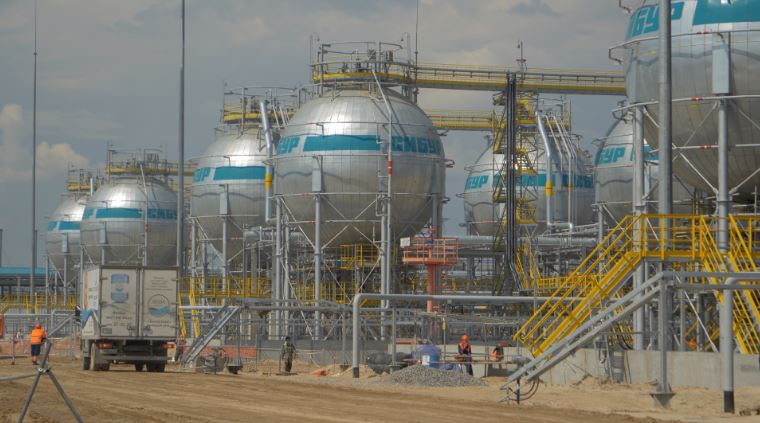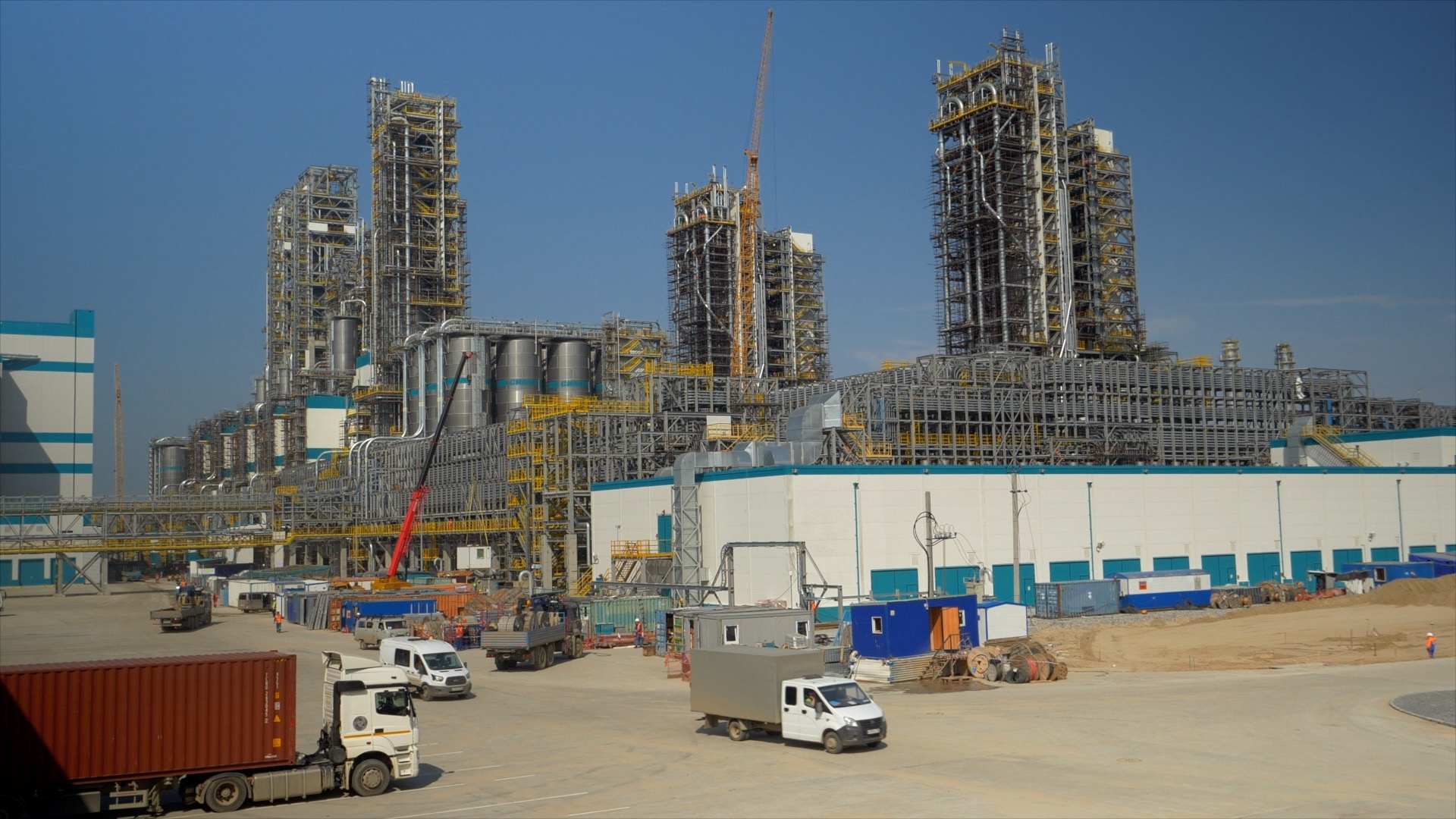

One of the key problems of the Russian economy is it is driven by the export of raw materials. In the face of Western sanctions and a paradigm shift toward China and the East, the Russian economy is also forced to seek new development options from semi-finished and high-tech products.
They are now heavily investing in those areas in the hope of getting results soon after. One of the latest examples is in Central Siberia, where the BRICS New Development Bank (NDB) has funneled a 300 million U.S. dollar loan to Russia's petrochemical giant Sibur for the construction of Russia's largest polyethylene and polypropylene production facility.
The total cost of that project is estimated at around 9.5 billion U.S. dollars, and its major part is some three hours' flight from Moscow to the east on the outskirts of the picturesque medieval town of Tobolsk, which features the famous and beautiful Tobolsk Kremlin from the 17th century. It is ZapSibNeftekhim, a daughter company of industry giant Sibur.

Tobolsk Kremlin, from the 17th century. /CGTN Photo
Over the last 20 years, Sibur saved the dying local petrochemical industry from the ashes and brought new life to the entire region – a reason for satisfaction for Aleksandar Moor, the governor of the Tyumen Region. Speaking to CGTN, Governor Moor said that's because the investments' economic effects on the Tyumen Region are immeasurable.

Aleksandar Moor, governor of the Tyumen Region. /CGTN Photo
"In these few years, there was several billion U.S. dollars invested into that project. Now, the latest one into ZapSibNeftekhim is in its final stage. It has (a) colossal effect on the economy of the Tyumen Region. Not only for Tobolsk, but for the entire region. They are bringing new highly skilled and paid jobs and also a synergy effect for small and medium business," Moor said.
This investment is not just a local one. It has attracted both investors and subcontractors from other countries as well. At the peak of construction, 28,000 workers from Russia, China and Turkey had been working on the construction of the factory which will become Russia's largest polyethylene and polypropylene producer.
The Sibur project is aimed at not only making Russia fully independent from the outside sources of those two polymers but also turning the country into a significant exporter. Its design capacity is 1.5 million tons of polyethylene and 500,000 tons of polypropylene, which are to be produced from the natural gas fractions.

The polyethylene production facility under final stages of construction at Sibur's Tobolsk plant. /CGTN Photo
At the construction site, we met Sergey Sergeev, pre-commissioning and commissioning works director of ZapSibNeftekhim LLC.
"Now we are already working on test production at the polypropylene plant. Construction is completed and we are continuing with commissioning of this part. Installation of the polyethylene facility, which is behind me, is currently in the active stage of commissioning," Sergeev said.
On top of expectations of bringing serious economic benefits, this project is also aimed at having a positive impact on the environment, something that is emphasized and praised by the NDB.
Sibur is now looking into further expansion of this project, with new ones that are already on the table. The project now has Chinese partners, namely China's state-owned oil giant Sinopec. That was confirmed to CGTN by Sibur's executive director Sergey Komyshan.

Sergey Komyshan, Sibur's executive director. /CGTN Photo
"We've signed a term sheet with Sinopec to create a joint venture on the basis of the Amur gas and chemical project that we've been working on since two years. It's going to be a steam cracker coupled with the several polymer units, polyethylene units, and hopefully then polypropylene," said Komyshan.
At the end of our visit, we witnessed a beautiful Siberian sunset. Yet for Tobolsk and the entire Tyumen Region, it seems as if the new economic sunrise is coming, thanks to Sibur and a little help from the BRICS friends.
(Cover: Raw materials tanks at the plant in Tobolsk, ready to soon store natural gas fractions for further processing. /CGTN Photo)

Copyright © 2018 CGTN. Beijing ICP prepared NO.16065310-3
Copyright © 2018 CGTN. Beijing ICP prepared NO.16065310-3